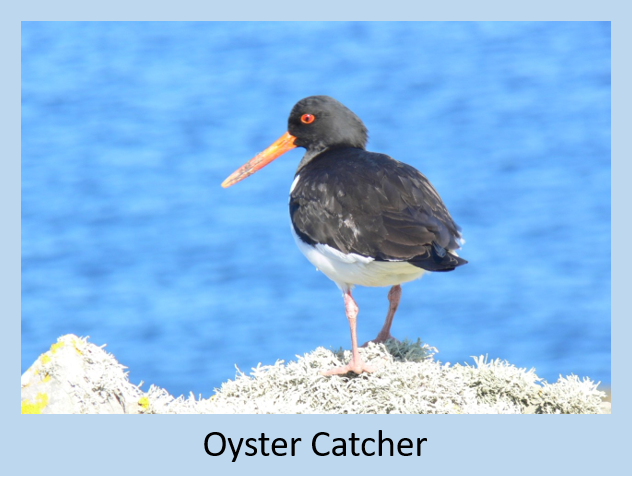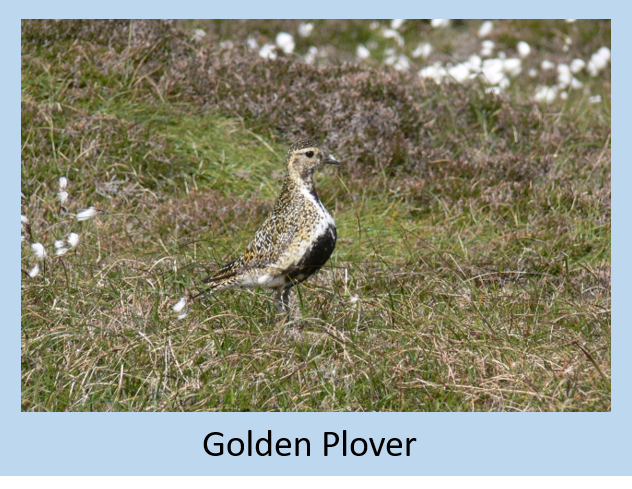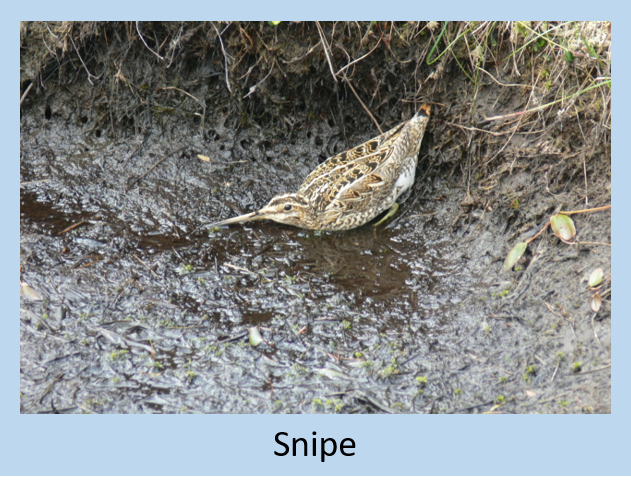What to look for this week - Wonderful Waders
Published: 12 May 2020
Shetland is rightly famous for its internationally important populations of breeding seabirds but folk are often unaware that our islands are also host to important populations of waders too. From April through June they are a very noisy part of our croftland and moorland and it’s impossible not to be aware of them if you walk anywhere other than the more densely populated parts of Lerwick, Scalloway or Brae.
 Eleven species breed here in nationally important numbers and this includes many of our most obvious species such as Curlew, Lapwing, Oystercatcher, Redshank and Snipe. Every spring since 2002 – apart from of course this one due to the lockdown - a small army of volunteers some 50 strong takes part in a breeding bird survey organised by Shetland Amenity Trust which gives us an insight into the fortunes of these, our in-bye waders. And it is largely good news – all of these species are holding their own in Shetland, unlike much of the British Isles where the populations are in freefall – usually due to the continued intensification of agriculture. Here in Shetland, agriculture is still pretty extensive meaning there is still room for our waders to find a home and breed successfully.
Eleven species breed here in nationally important numbers and this includes many of our most obvious species such as Curlew, Lapwing, Oystercatcher, Redshank and Snipe. Every spring since 2002 – apart from of course this one due to the lockdown - a small army of volunteers some 50 strong takes part in a breeding bird survey organised by Shetland Amenity Trust which gives us an insight into the fortunes of these, our in-bye waders. And it is largely good news – all of these species are holding their own in Shetland, unlike much of the British Isles where the populations are in freefall – usually due to the continued intensification of agriculture. Here in Shetland, agriculture is still pretty extensive meaning there is still room for our waders to find a home and breed successfully.
 Some of our other key species such as Golden Plover and Whimbrel are more at home on moorland while the tiny Dunlin loves it wet – usually the presence of breeding Dunlin is a good indicator that the habitat is active blanket bog. Notice too how our breeding Dunlin has lovely rich chestnut tones on its upperparts and that neat black belly – this pattern makes it remarkably difficult to see among its breeding habitat. Come the winter though when the Dunlin moves to feed on estuaries, this colour scheme would make it very obvious to would-be predators, so instead it moults into a very dun grey plumage – much better camouflage against greyish mud or sand.
Some of our other key species such as Golden Plover and Whimbrel are more at home on moorland while the tiny Dunlin loves it wet – usually the presence of breeding Dunlin is a good indicator that the habitat is active blanket bog. Notice too how our breeding Dunlin has lovely rich chestnut tones on its upperparts and that neat black belly – this pattern makes it remarkably difficult to see among its breeding habitat. Come the winter though when the Dunlin moves to feed on estuaries, this colour scheme would make it very obvious to would-be predators, so instead it moults into a very dun grey plumage – much better camouflage against greyish mud or sand.
It may be that one or two species of wader have actually increased in population size here in Shetland – several older crofters have told me there are a lot more Shalders around now than when they were bairns. The Oystercatcher is rather unique among our breeding waders. Firstly, pairs often mate for life which is quite unusual among waders and, secondly, they feed their young right up to, and often beyond, fledging. Most wader chicks are able to feed for themselves not long after leaving the nest, that’s why they are born with such oversize feet and bills!
 Wader chicks need to be mobile quickly after hatching as the nest is a dangerous place to be. So the adults tend not to start incubating their eggs until the whole cutch is laid, and this can take several days. This helps synchronise the hatching. The chicks will also call to each other from within the egg – in Golden Plovers this might start to happen up to five days before hatching. This too helps synchronise hatching. Why is this so important? Well, the longer the chicks have to wait around at the nest for their siblings to hatch, the more likely a predator will locate them and this could result in the loss of the whole clutch. Once hatched the adults walk their chicks away from the nest and the chicks disperse a few meters or more from each other. This makes good sense. A predator might find one chick but will still have to work hard to find the others. Whilst it’s sad to lose one chick, it’s a lot better than losing them all and wasting all that effort on breeding for no return. In Snipe, the males will often take the first couple of chicks that hatch and leave the female to take the others. The male and the female might not meet again!
Wader chicks need to be mobile quickly after hatching as the nest is a dangerous place to be. So the adults tend not to start incubating their eggs until the whole cutch is laid, and this can take several days. This helps synchronise the hatching. The chicks will also call to each other from within the egg – in Golden Plovers this might start to happen up to five days before hatching. This too helps synchronise hatching. Why is this so important? Well, the longer the chicks have to wait around at the nest for their siblings to hatch, the more likely a predator will locate them and this could result in the loss of the whole clutch. Once hatched the adults walk their chicks away from the nest and the chicks disperse a few meters or more from each other. This makes good sense. A predator might find one chick but will still have to work hard to find the others. Whilst it’s sad to lose one chick, it’s a lot better than losing them all and wasting all that effort on breeding for no return. In Snipe, the males will often take the first couple of chicks that hatch and leave the female to take the others. The male and the female might not meet again!
Many waders become particularly noisy and obvious to us when they have chicks – this is simply mum and dad screaming at the kids to stay still. If you stay still you are far less likely to get seen by a roving predator than if you move. So next time you’re out walking, wondering why that Oystercatcher or Redshank is making all that fuss, you’ll know that there is probably a chick or two nearby. It’s time to move on.
Paul Harvey, Natural Heritage Officer, Shetland Amenity Trust - May 2020
We hope you have enjoyed this blog.  We rely on the generous support of our funders and supporters to continue our work on behalf of Shetland. Everything we do is about caring for Shetland's outstanding natural and cultural heritage on behalf of the community and for future generations. Donations are welcomed and are essential to our work.
We rely on the generous support of our funders and supporters to continue our work on behalf of Shetland. Everything we do is about caring for Shetland's outstanding natural and cultural heritage on behalf of the community and for future generations. Donations are welcomed and are essential to our work.

